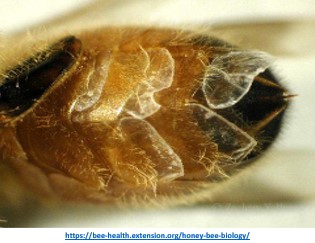What is Beeswax
Beeswax is one of the six natural renewable materials precast from the Honey Bee (Apis Mellifera); it is the foundation of a Honey Bee colony developmental success and survival. Honey Bee Beeswax is produced without the influence from external raw material. From its’ own internal biological order, the Honey Bees create wax mirror secretions into beeswax.
Honey Bee’s systematically engineer layers of hexagon beeswax cells which provide space to rear their young, store their food (pollen, bee bread and honey), and thermoregulate hive temperature. Beeswax also serves as a defense strategy. Honey Bees will produce wax scales to seal off destructive viral pathogens and pests inside the beeswax hexagon cell that potentially invade the hive.
The wax of the honey bee (Apis Mellifera) is a complex lipid-based organic compound produced by worker bees using four pairs of specialized wax glands located on the underside of the 4th to 7th abdominal sternites. Beeswax composition makeup is complex consisting of: *14% hydrocarbons, *12% – 14% free fatty acids, and *67% complex wax esters and hydroxy monoesters. From the soft, pliable wax mirror secretions, the Honey Bee works it into a brittle material, with a specific gravity of about 0.95 and a melting point of over 60°C. Its’ stability and impermeability to water contribute to a waterproof role therefor protecting the next generation and their food source.
Beeswax, the natural byproduct of honey bee, has been a staple in human civilization for centuries. Early cultures recognized its unique properties, commissioning beeswax for various practical purposes. Humans have been harvesting beeswax for centuries benefiting from food, medicinal care & healing, religious practice & beliefs, cosmetics, soaps, creams & balms, preserving food, tools & fixtures, monetary & trade commissions. Rendered in to the form of candles Beeswax gives us light and cleanses the air. The scent of beeswax is therapeutic, soothing and relaxing the anxious mind and body. Each of these uses highlights the versatility and enduring nature of beeswax. Its unique properties continue to make it a valuable resource through historical, traditional and modern applications.
How Beeswax is produced
The production of beeswax is an energy-intensive process, which highlights the intricate and efficient way honeybees operate as a colony. Beeswax is produced from younger house bees approx. between 4 to 12 days old. Secreted in the form of liquid wax scales from the eight ventrally paired wax mirrors on the underside of the young bee’s abdomen. When the liquid wax scales are exposed to air, the secreted liquid becomes hardened in to wax scales
The young house bees transfer the liquid wax scales with their forelegs to their mandibles (mouth parts). The main effect of this mandibulation process is a transformation of scale wax into comb wax, adding salivary secretions chewing the liquid wax scales, forming the final product Beeswax, then applying the beeswax to newly formed comb or repair existing comb
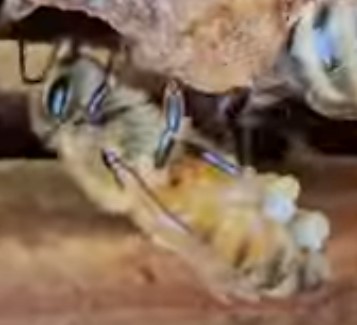
The younger house bee wax glands do gradually shrink. Approximately by day 18, the young house bee’s ability to produce wax diminishes significantly, marking the end of its wax-producing phase. If necessary, older Honey Bee’s share the duties by taking the wax scales from the younger wax scale producing bees and begin chewing them into pliable comb wax.
Although older field bees can assist in making beeswax to build up the hive, their Mellifera glands have slightly atrophied. The ability to produce wax scales is on a smaller limited scale. The field bee’s typical focus is primarily collecting pollen & nectar for the colony winter stores and resin to control temperature inside the hive.
During the comb-building process honey bees display Festooning behavior. Festooning is a chain of Honey Bee legs linked together forming a chain. This activity works to maintain the optimum temperature needed for wax production, keeping the wax soft and pliable to build honey combs for the colony brood and food stores.
Honey and Pollen play a significant part in the newly emerged Honey Bee. The young Honey Bee must consume large quantities of pollen to develop the fat cells to metabolize honey so then they can begin producing wax scales. To get one gram of beeswax the honey bees must produce 1100 wax scales Around eight kilograms of honey are consumed to produce every one kilogram of wax.
Types of Beeswax Honey Comb:
New Comb- This is the first wax produced to begin hive building. The typical white wax color is influenced by the biological composition and honey from the honey bee. New wax is the beginning phase to house new brood (larvae), store honey, pollen and bee bread

Honey Comb / Comb Capping- is lighter in color. It is the first-year beeswax produced by Honey Bees. The capping wax is thin pliable beeswax that covers the honey cells. Comb Capping wax is typically yellow-whiteish in color that is influenced from small amounts of honey when chewed by the honey bee.
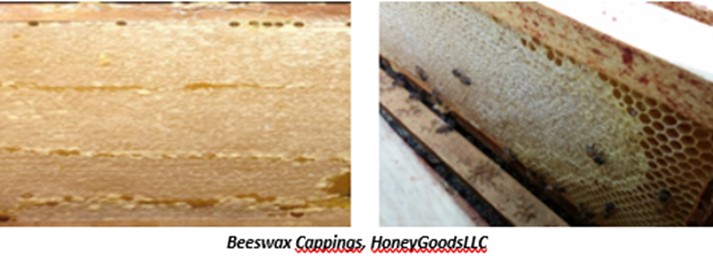
Burr Comb- wax is miscellaneous wax that are found in odd places throughout the hive; Queen Excluder, Inner Cover, Beehive Cover, along the edges of frames and hive body box. The bees may store honey in burr comb. Burr comb is used to fill in gaps of the hive to seal and prevent wind & moisture from entering in the hive.
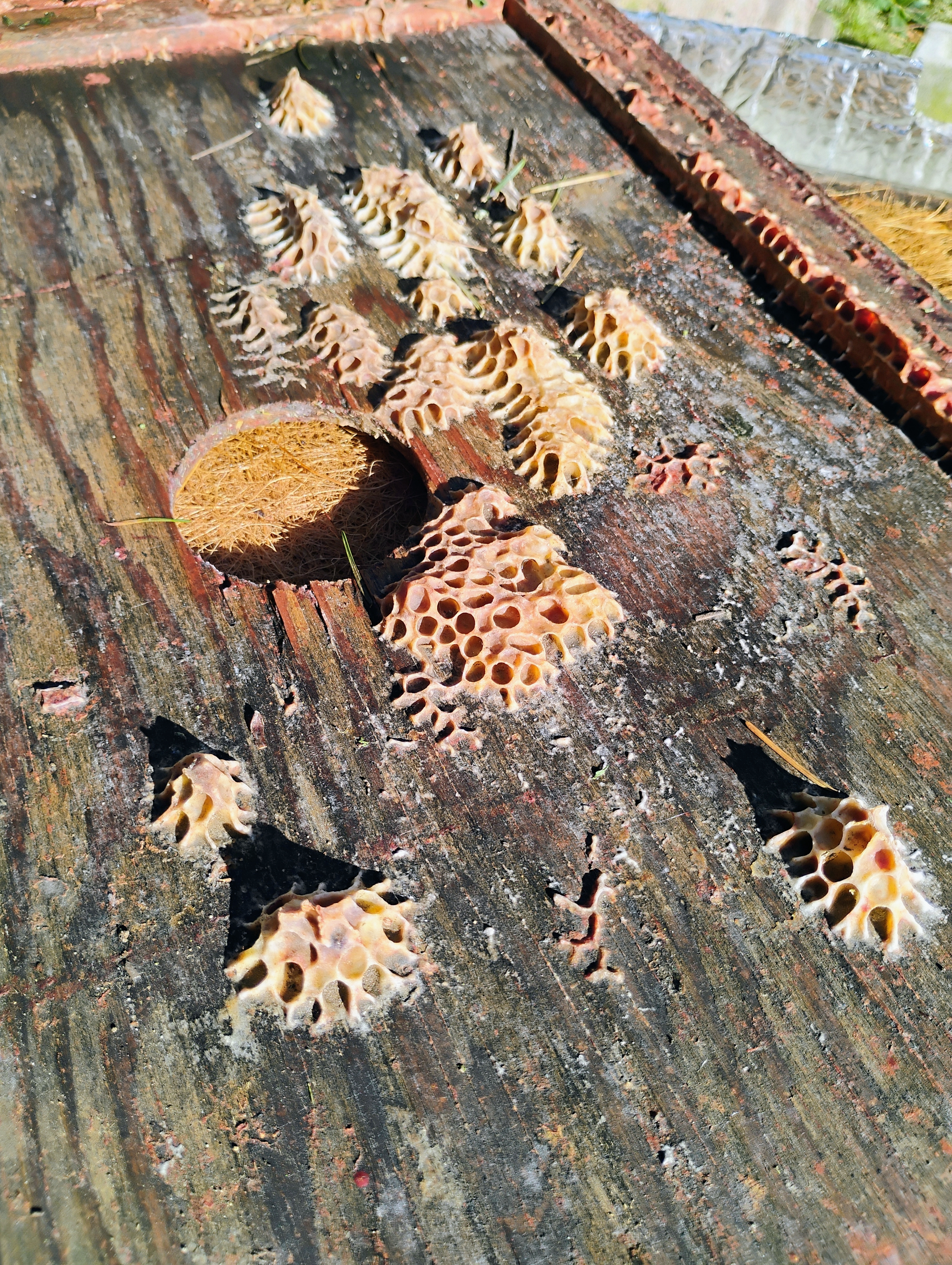
Brood Comb- Located in the brood chamber of the hive. The wax becomes very dark after years of use repeatedly rearing brood. Brood wax contains more than beeswax. The cells are constantly being repaired and prepared for the next generation. Brood wax overuse is the result of other organic material such as honey bee debris & feces. Propolis is collected and used to strengthen and seal the cell walls. After maximum of five years of use the Beekeeper usually collects the Brood wax and renders in to beeswax.
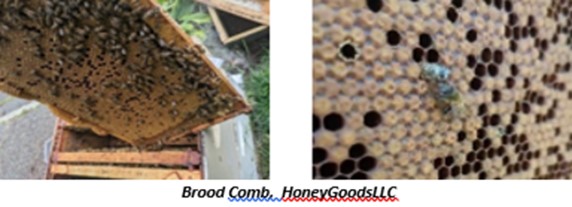
Conclusion:
It’s incredible how something so simple and natural can have such a broad range of applications—everything from ancient embalming techniques to modern skincare products and eco-friendly candles.
The teamwork involved, and the intricate steps, producing Bees Wax Honey Comb really show how each bee has a specific role that supports the whole colony’s survival. It’s also interesting to think about how much energy and resources are required to create beeswax, especially when you consider that the bees need to gather nectar, turn it into honey, and then use that energy to produce the wax. This connection between nectar, honey, and wax production emphasizes just how critical a healthy ecosystem is for the colony's well-being.
The bees, as vital pollinators, play a crucial role in maintaining biodiversity and the overall health of ecosystems. Supporting them isn’t just about preserving an ancient resource, but also protecting the delicate balance of our environment. The more we understand how interconnected we are with these small creatures, the more we realize how essential they are for everything from food production to natural materials like beeswax.
Today, beeswax still holds economic importance, especially in niche markets like natural cosmetics, organic candles, and sustainable materials, where its demand remains high due to its non-toxic, eco-friendly properties. In a world that increasingly values sustainability, beeswax’s rarity and natural qualities are becoming even more appealing, and its role in industries like skincare and eco-conscious manufacturing can be seen as a direct extension of its historical value.
In a world increasingly focused on sustainability, finding ways to protect pollinators—through conscious agricultural practices, habitat preservation, and reducing the use of harmful chemicals—feels like one of the most important steps we can take. What do you think are some of the most effective ways we could help protect bee populations moving forward?
Do you think this enduring value of beeswax will continue to grow, especially as people become more focused on natural and sustainable products?
Honey Goods LLC harvests natural, pure, unadulterated Beeswax from our own apiary so you can be sure to get all the benefits from beeswax or create your own DIY projects with all the equipment you need.
https://www.honeygoodsllc.com/beeswax?rpp=24
Read from our Blog "How to render pure Beeswax" to get more indepth understanding how pure Beeswax is transformed in to useable product for DIY projects.
